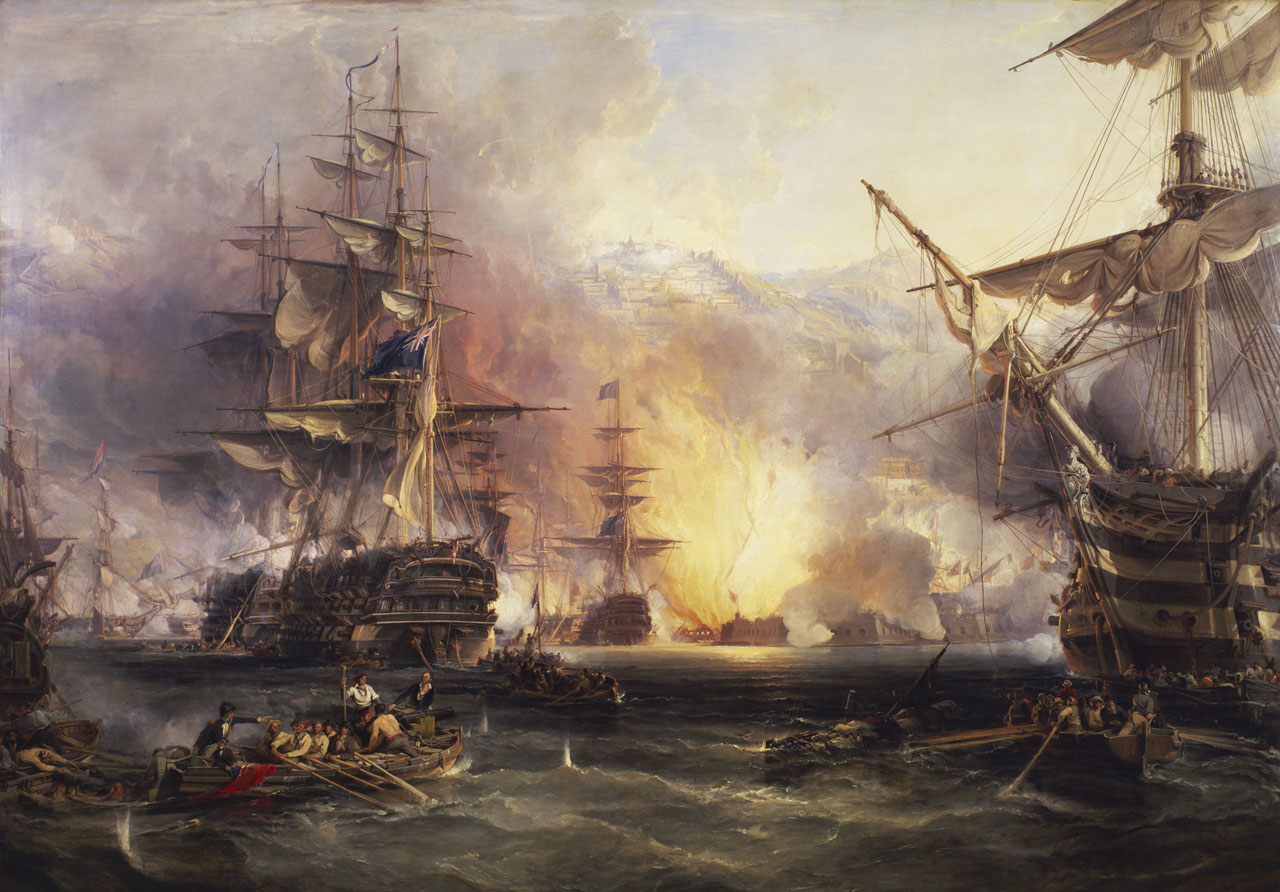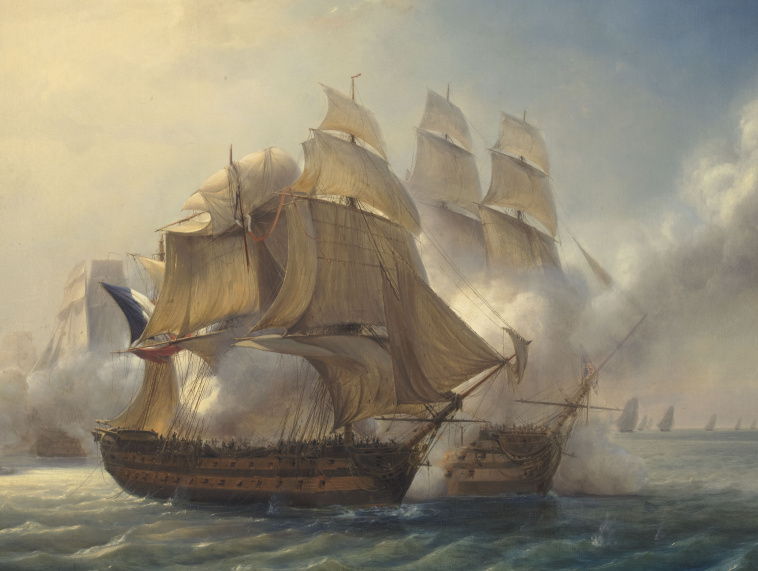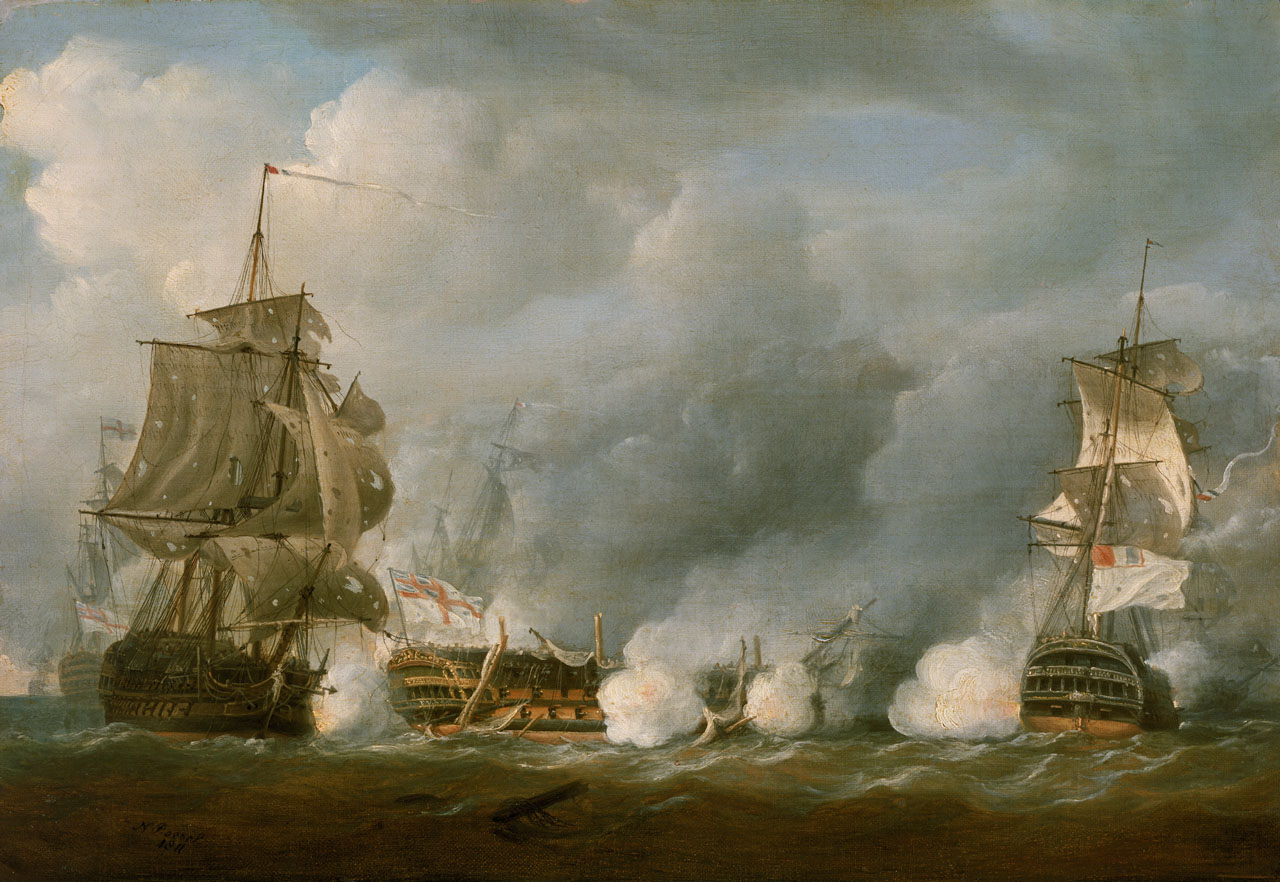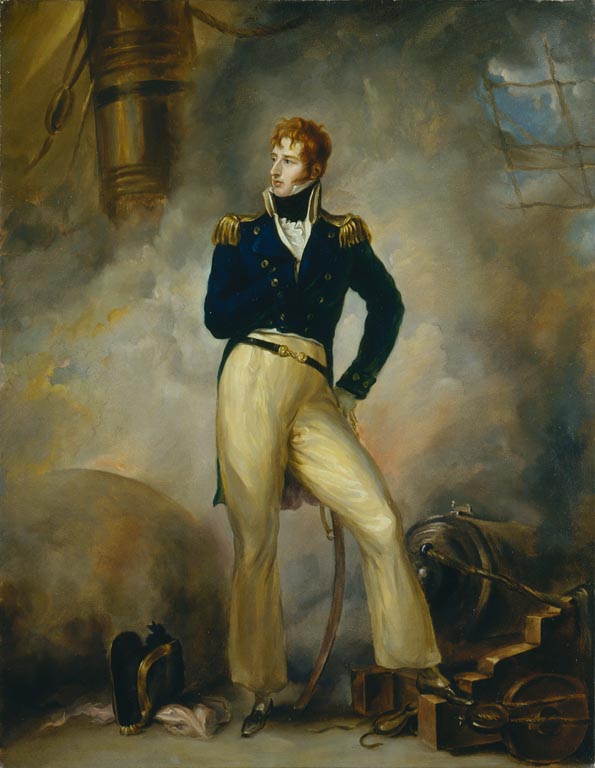|
George Burlton
Rear-Admiral Sir George Burlton KCB (died 21 September 1815) was an officer of the Royal Navy during the Napoleonic Wars. Naval career Burlton was commissioned as a Lieutenant on 15 September 1777David Bonner Smith, The Commissioned Sea Officers of the Royal Navy 1660-1815'', cited in Simon Harrison,Sir George Burlton, accessed 18 December 2011 and in 1783 was in command of HMS ''Camel'', 24.Rif Winfield, ''British Warships in the Age of Sail 1714-1792'', cited in Simon Harrison,Sir George Burlton, accessed 18 December 2011 He was made Commander on 5 July 1794. In March 1795 he was acting captain of the 32-gun frigate ''Lively'' when she captured the French corvette ''Tourtourelle'',Joseph Haydn, ''The Book of Dignities'', 1851p. 298 col. 2/ref> and he was promoted to post captain on 16 March that year into the 74-gun . Towards the end of 1796 he travelled to Cape Town. There in November he received command of the Dutch frigate ''Castor'', which the British had captured at ... [...More Info...] [...Related Items...] OR: [Wikipedia] [Google] [Baidu] |
Rear-Admiral
Rear admiral is a flag officer rank used by English-speaking navies. In most European navies, the equivalent rank is called counter admiral. Rear admiral is usually immediately senior to commodore and immediately below vice admiral. It is usually equivalent to the rank of major general in armies. In the U.S. Navy and some other navies, there are two rear admiral ranks. The term originated in the days of naval sailing squadrons and can trace its origins to the British Royal Navy. Each naval squadron was assigned an admiral as its head, who commanded from the centre vessel and directed the squadron's activities. The admiral would in turn be assisted by a vice admiral, who commanded the lead ships that bore the brunt of a battle. In the rear of the squadron, a third admiral commanded the remaining ships and, as this section was considered to be in the least danger, the admiral in command of it was typically the most junior. This has continued into the modern age, with rear ... [...More Info...] [...Related Items...] OR: [Wikipedia] [Google] [Baidu] |
British Warships In The Age Of Sail
''British Warships in the Age of Sail'' is a series of four books by maritime historian Rif Winfield comprising a historical reference work providing details of all recorded ships that served or were intended to serve in the (British) Royal Navy (and its predecessor services) from 1603 to 1863. Similar volumes dealing with other navies during the Age of Sail have followed from the same publisher. Scope The books draw data from Admiralty official records to give details on the location of construction, dates of construction (ordering, keel laying, launch, commissioning and completion of fitting-out), principal dimensions and tonnage, complement of men and armament, machinery (for steam vessels) and fate of every ship of the Royal Navy over the period. Designed dimensions and tonnage are given for every class of vessel planned and built for the Navy, but in addition the actual dimensions measured for each individual vessel completed to those designs are separately given; this t ... [...More Info...] [...Related Items...] OR: [Wikipedia] [Google] [Baidu] |
Flag Rank
A flag officer is a commissioned officer in a nation's armed forces senior enough to be entitled to fly a flag to mark the position from which that officer exercises command. Different countries use the term "flag officer" in different ways: * In many countries, a flag officer is a senior officer of the navy, specifically one holding any of the admiral ranks; the term may or may not include the rank of commodore. * In some countries, such as the United States, India, and Bangladesh, the designation may apply in all armed forces, not just in the navy. This means generals can also be considered flag officers. * In most Arab armies, ''liwa'' (Arabic: لواء), which can be translated as "flag officer", is a specific rank, equivalent to a major general. However, "ensign" is debatably a more exact literal translation of the word. In principle, a ''liwa'' commands several units called "flags" or "ensigns" (i.e. brigades, also called ''liwa''). * Russian navies refer to the app ... [...More Info...] [...Related Items...] OR: [Wikipedia] [Google] [Baidu] |
Edward Pellew, 1st Viscount Exmouth
Admiral (Royal Navy), Admiral Edward Pellew, 1st Viscount Exmouth, Order of the Bath, GCB (19 April 1757 – 23 January 1833) was a Royal Navy officer and politician. He fought during the American War of Independence, the French Revolutionary Wars, and the Napoleonic Wars. His younger brother Israel Pellew also pursued a naval career. Childhood Pellew was born at Dover, the second son of Samuel Pellew (1712–1764), commander of a Dover packet boat, packet, and his wife, Constantia Langford. The Pellew family was Cornish people, Cornish, descended from a family that came originally from Normandy, but had for many centuries been settled in the west of Cornwall. Edward's grandfather, Humphrey Pellew (1650–1721), a merchant and ship owner, son of a naval officer, resided at Flushing manor-house in the parish of Mylor. Part of the town of Flushing, Cornwall, Flushing was built by Samuel Trefusis, MP for Penryn, Cornwall, Penryn; the other part was built by Humphrey Pellew, who wa ... [...More Info...] [...Related Items...] OR: [Wikipedia] [Google] [Baidu] |
French Ship Romulus (1812)
''Romulus'' was a 4th rank, 74-gun built for the French Navy during the first decade of the 19th century. Completed in 1812, she played a minor role in the Napoleonic Wars. Description Designed by Jacques-Noël Sané, the ''Téméraire''-class ships had an length of , a beam of and a depth of hold of . The ships displaced 3,069 tonneaux and had a mean draught of . They had a tonnage of 1,537 port tonneaux. Their crew numbered 705 officers and ratings during wartime. They were fitted with three masts and ship rigged.Winfield & Roberts, p. 87 The muzzle-loading, smoothbore armament of the ''Téméraire'' class consisted of twenty-eight 36-pounder long guns on the lower gun deck and thirty 18-pounder long guns on the upper gun deck. After about 1807, the armament on the quarterdeck and forecastle varied widely between ships with differing numbers of 8-pounder long guns and 36-pounder carronades. The total number of guns varied between sixteen and twenty-eight. The 36-pounder o ... [...More Info...] [...Related Items...] OR: [Wikipedia] [Google] [Baidu] |
Colonel Of Marines
Colonel (Col) is a rank of the British Army and Royal Marines, ranking below brigadier, and above lieutenant colonel. British colonels are not usually field commanders; typically they serve as staff officers between field commands at battalion and brigade level. The insignia is two diamond-shaped pips (properly called "Bath Stars") below a crown. The crown has varied in the past with different monarchs; Elizabeth II's reign used St Edward's Crown. The rank is equivalent to captain in the Royal Navy and group captain in the Royal Air Force. Etymology The rank of colonel was popularised by the tercios that were employed in the Spanish Army during the 16th and 17th centuries. General Gonzalo Fernández de Córdoba divided his troops into ''coronelías'' (meaning "column of soldiers" from the Latin, ''columnella'' or "small column"). These units were led by a ''coronel''. This command structure and its titles were soon adopted as ''colonello'' in early modern Italian and in Mid ... [...More Info...] [...Related Items...] OR: [Wikipedia] [Google] [Baidu] |
Thomas Cochrane, 10th Earl Of Dundonald
Admiral Thomas Cochrane, 10th Earl of Dundonald (14 December 1775 – 31 October 1860), styled Lord Cochrane between 1778 and 1831, was a British naval officer, politician and mercenary. Serving during the French Revolutionary and Napoleonic Wars in the Royal Navy, his naval successes led Napoleon to nickname him ''le Loup des Mers'' (the Sea Wolf). He was successful in virtually all of his naval actions. Cochrane was dismissed from the Royal Navy in 1814 after a controversial conviction for fraud on the London Stock Exchange. Travelling to South America, he helped to organise and lead the revolutionary navies of Chile and Brazil during their respective wars of independence during the 1820s. While commanding the Chilean Navy, Cochrane also contributed to Peruvian independence through his participation in the Liberating Expedition of Peru. He was also hired to help the Greek Revolutionary Navy during the Greek War of Independence, but ultimately had little impact. In 1832, C ... [...More Info...] [...Related Items...] OR: [Wikipedia] [Google] [Baidu] |
James Gambier, 1st Baron Gambier
Admiral of the Fleet James Gambier, 1st Baron Gambier, (13 October 1756 – 19 April 1833) was a Royal Navy officer and colonial administrator. After seeing action at the capture of Charleston during the American Revolutionary War, he saw action again, as captain of the third-rate , at the battle of the Glorious First of June in 1794, during the French Revolutionary Wars, gaining the distinction of commanding the first ship to break through the enemy line. Gambier went on to be a Lord Commissioner of the Admiralty and First Naval Lord and then served as Governor of Newfoundland. Together with General Lord Cathcart, he oversaw the bombardment of Copenhagen during the Napoleonic Wars. He later survived an accusation of cowardice for his inaction at the Battle of the Basque Roads. Early career Born the second son of John Gambier, the Lieutenant Governor of the Bahamas and Bermudian Deborah Stiles, Gambier was brought up in England by his aunt, Margaret Gambier, and her h ... [...More Info...] [...Related Items...] OR: [Wikipedia] [Google] [Baidu] |
Court-martial Of James, Lord Gambier
A court-martial (plural ''courts-martial'' or ''courts martial'', as "martial" is a postpositive adjective) is a military court or a trial conducted in such a court. A court-martial is empowered to determine the guilt of members of the armed forces subject to military law, and, if the defendant is found guilty, to decide upon punishment. In addition, courts-martial may be used to try prisoners of war for war crimes. The Geneva Conventions require that POWs who are on trial for war crimes be subject to the same procedures as would be the holding military's own forces. Finally, courts-martial can be convened for other purposes, such as dealing with violations of martial law, and can involve civilian defendants. Most navies have a standard court-martial which convenes whenever a ship is lost; this does not presume that the captain is suspected of wrongdoing, but merely that the circumstances surrounding the loss of the ship be made part of the official record. Most military for ... [...More Info...] [...Related Items...] OR: [Wikipedia] [Google] [Baidu] |
Battle Of The Basque Roads
The Battle of the Basque Roads, also known as the Battle of Aix Roads ( French: ''Bataille de l'île d'Aix'', also ''Affaire des brûlots'', rarely ''Bataille de la rade des Basques''), was a major naval battle of the Napoleonic Wars, fought in the narrow Basque Roads at the mouth of the Charente River on the Biscay coast of France. The battle, which lasted from 11 to 24 April 1809, was unusual in that it pitted a hastily-assembled squadron of small and unorthodox British Royal Navy warships against the main strength of the French Atlantic Fleet. The circumstances were dictated by the cramped, shallow coastal waters in which the battle was fought. The battle is also notorious for its controversial political aftermath in both Britain and France. In February 1809 the French Atlantic Fleet, blockaded in Brest on the Breton coast by the British Channel Fleet, attempted to break out into the Atlantic and reinforce the garrison of Martinique. Sighted and chased by British blockade s ... [...More Info...] [...Related Items...] OR: [Wikipedia] [Google] [Baidu] |
Capitulation Of Saldanha Bay
The capitulation of Saldanha Bay was the surrender to the British of a Batavian expeditionary force sent to recapture the Dutch Cape Colony in 1796. In 1795, early in the War of the First Coalition, French troops overran the Dutch Republic which then became a French client state, the Batavian Republic. Great Britain was concerned by the threat that the Cape Colony posed to its trade routes to British India. It therefore sent an expeditionary force that landed at Simon's Town in June 1795 and forced the surrender of the colony in a short campaign. British Vice-Admiral Sir George Elphinstone, then reinforced the garrison and stationed a naval squadron at the Cape Colony to protect it. The Batavian government, not yet aware of the capture of the Cape Colony, but worried by rumors of British attacks against colonies of the Dutch East India Company (which was about to be nationalised because it was virtually bankrupt), decided to send a Batavian Navy squadron to the Dutch East In ... [...More Info...] [...Related Items...] OR: [Wikipedia] [Google] [Baidu] |
Seventy-four (ship)
The "seventy-four" was a type of two-gun deck, decked sailing ship of the line, which nominally carried 74 guns. It was developed by the French navy in the 1740s, replacing earlier classes of 60- and 62-gun ships, as a larger complement to the recently developed 64-gun ships. Impressed with the performance of several captured French seventy-fours, the British Royal Navy quickly adopted similar designs, classing them as third rates. The type then spread to the Spanish, Dutch, Danish and Russian navies. The design was considered a good balance between firepower and sailing qualities. Hundreds of seventy-fours were constructed, becoming the dominant form of ship-of-the-line. They remained the wikt:mainstay, mainstay of most major fleets into the early 19th century. From the 1820s, they began to be replaced by larger two-decked ships mounting more guns. However, some seventy-fours remained in service until the late 19th century, when they were finally supplanted by ironclad warship, i ... [...More Info...] [...Related Items...] OR: [Wikipedia] [Google] [Baidu] |





